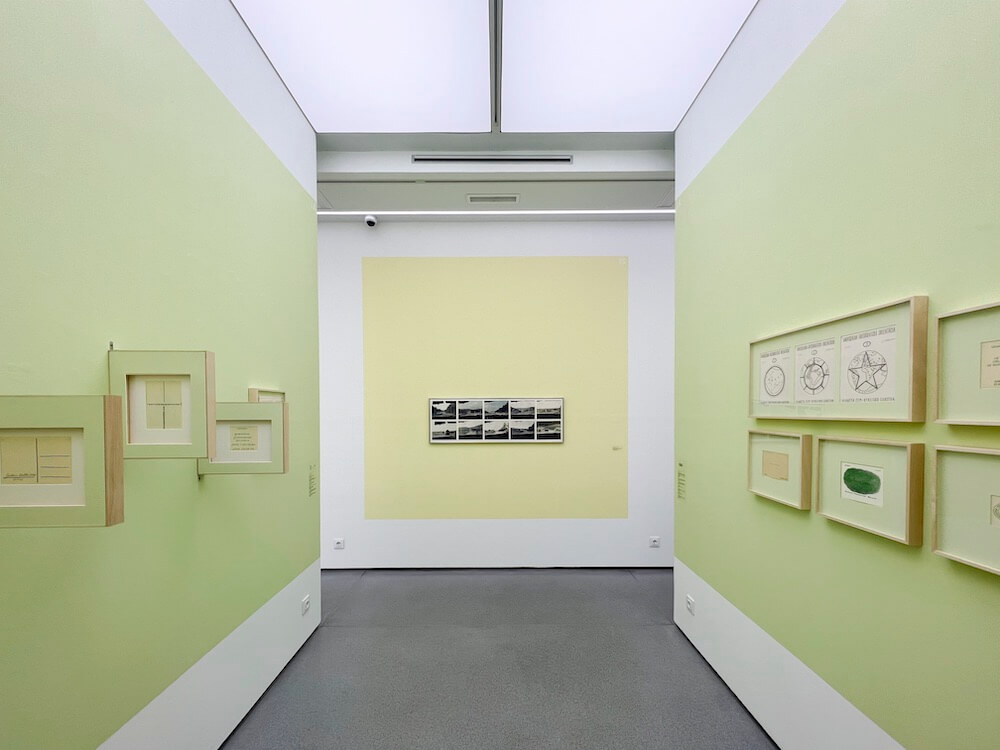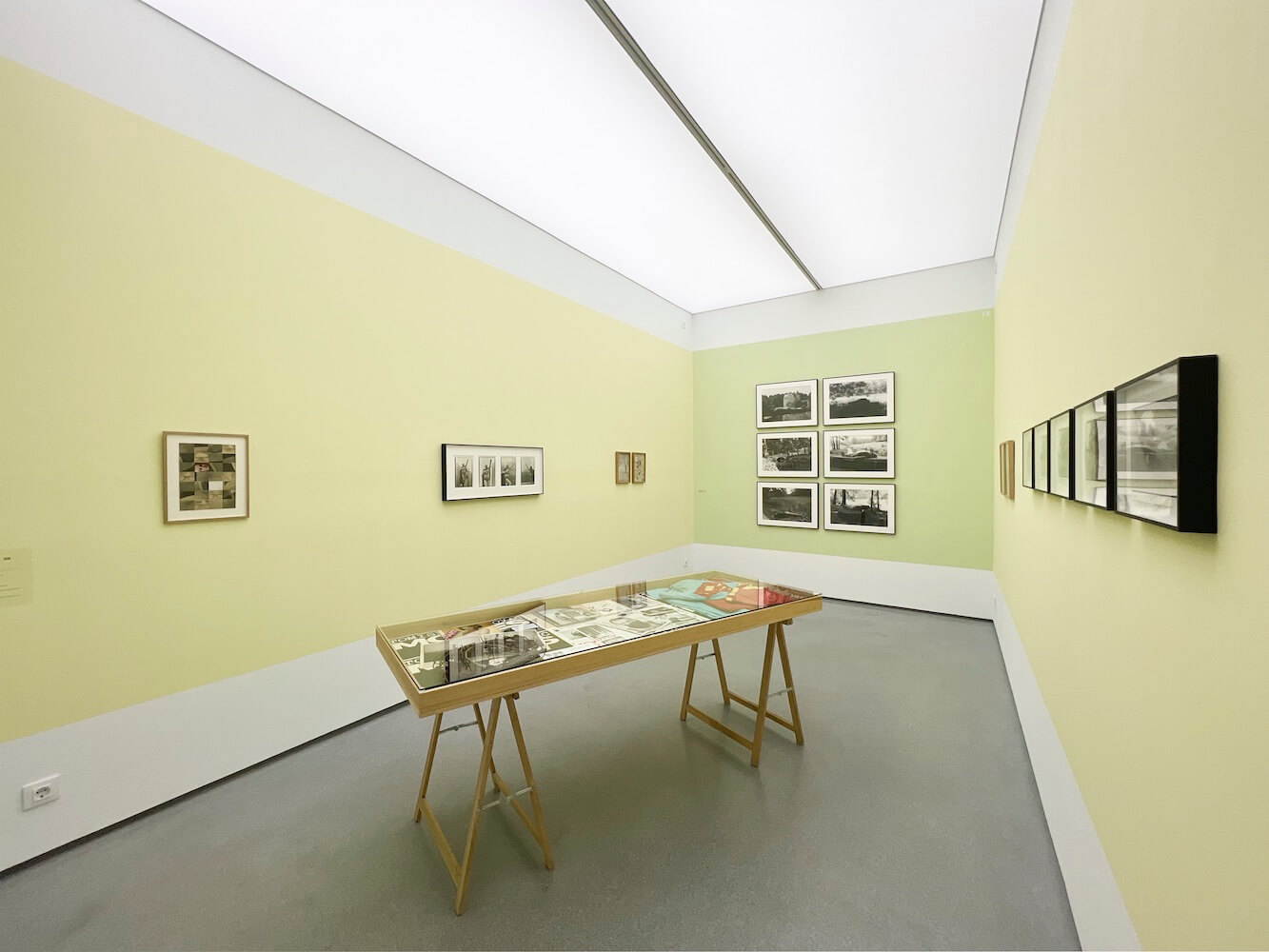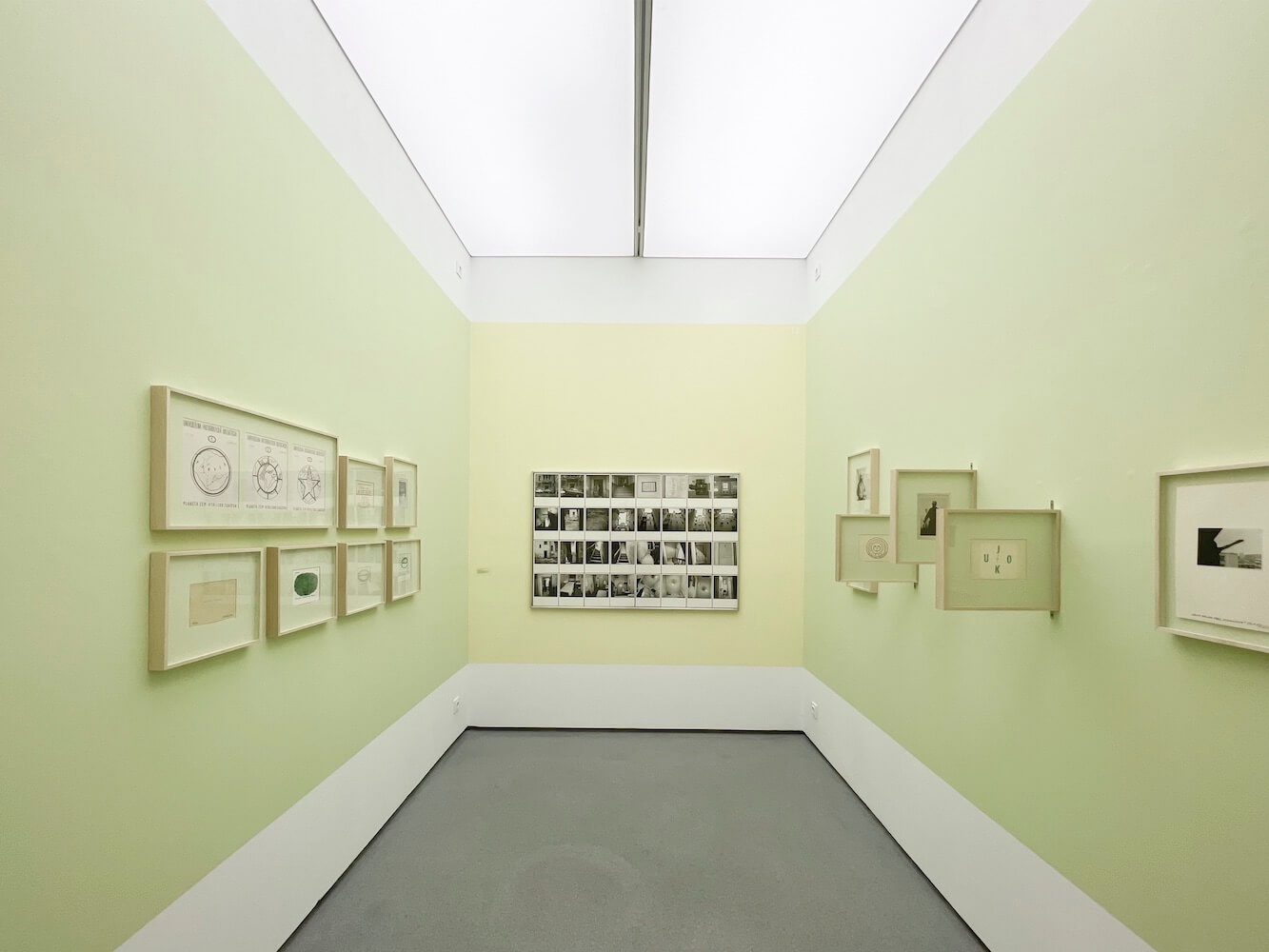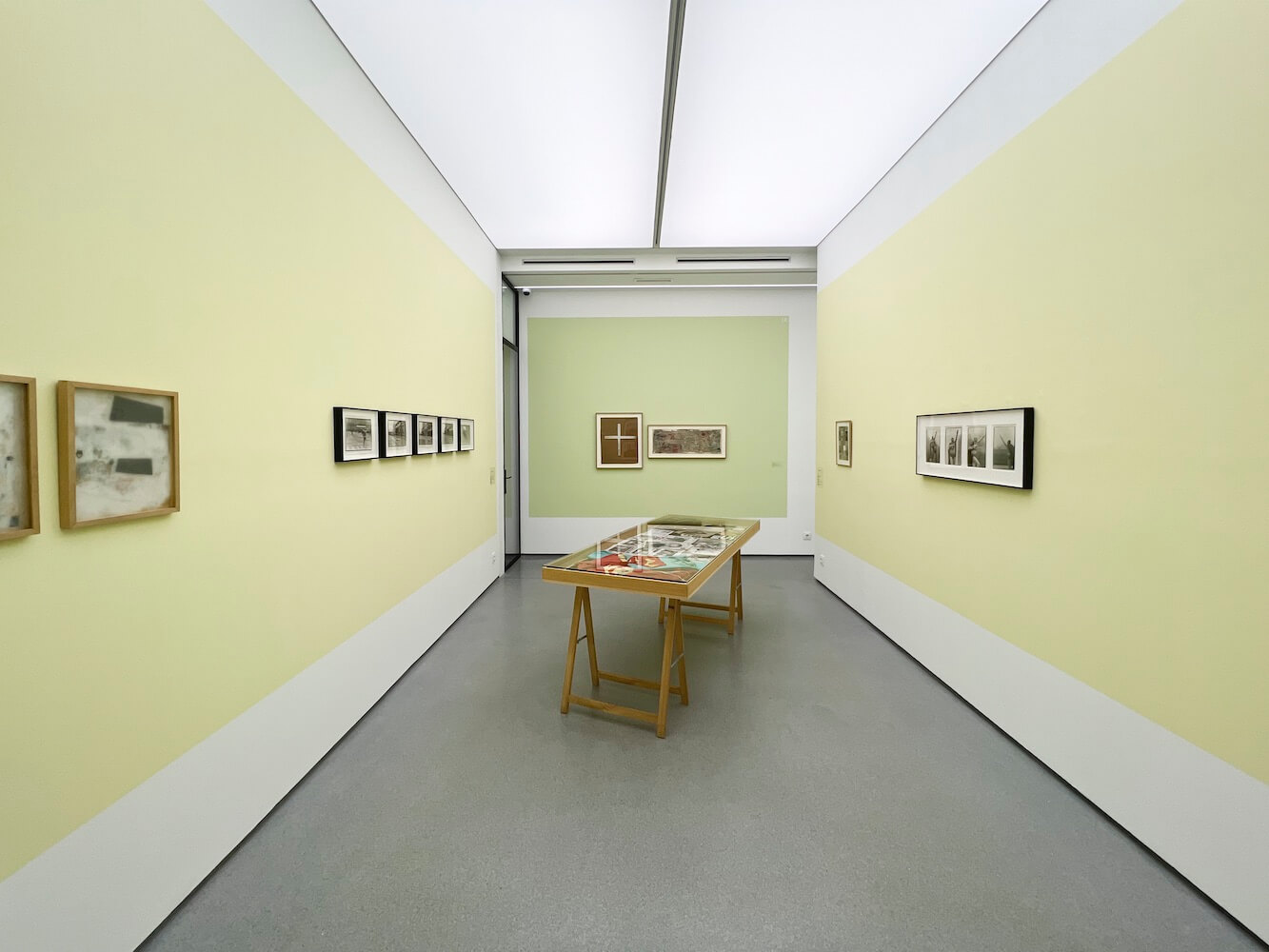V
ý
s
t
a
v
y
TOMISLAV GOTOVAC & JÚLIUS KOLLER: COSMOLOGY OF UNCERTAINTY
1 MIRA MADRID 1MM
ARGUMOSA 16, BAJO DCHA.
28012 MADRID, SPAIN TEL.
INFO@1MIRAMADRID.COM
1MIRAMADRID.COM
08.09—12.11.2022
Texts by: Darko Šimičić, Daniel Grúň
Mira Bernabeu,
Darko Šimičić & Daniel Grúň
CONVERSATION
Deciding to do a joint exhibition of artists Tomislav Gotovac and Július Koller represents a challenge because albeit their similarities there are also great differences in their works. With this short series of questions to Darko Šimičić (Tomislav Gotovac Institute) and Daniel Grúň (Július Koller Society), I tried to discover those analogies and disparities.
Mira Bernabeu: In what ways did the political climate both had to live through affected them? And how is this reflected in their practices?
Darko Šimičić: The political framework of the socialist and non-bloc Yugoslavia, where he spent most of his creative life, strongly informed the artistic opus of Tomislav Gotovac. During his formative years, Gotovac had the opportunity to see the best of both the East and the West in Zagreb, including films, theatre plays and exhibitions that shaped his views on art and the world in general. Within the cultural space, he opted for the position of a misfit who, paradoxically, turned out to be a very visible and powerful proponent of individual freedom. In the words of writer Dubravka Ugrešić: “ Tomislav Gotovac has taught us what art can be.”
Daniel Grúň: Július Koller was born in 1939 after the first Czechoslovak republic was broken. He studied painting in times of relative liberalization of the communist regime in the first half of the 1960s. However, his attitudes were also influenced by social and political disillusionment after the military occupation in 1968. One year later, he started using the universal sign of doubt, a Question Mark. One could say that question marks permeated his work, signaling resistance against the general passivity of citizens.
MB: Both are part of the same generation of eastern European artists. What was their relation to the West, and was there a fascination or a rejection?
DŠ: Gotovac was fascinated by the United States, especially the segment of popular American culture that became globally dominant after World War II: film and jazz music. He always said that film, particularly Hollywood film, was key to understanding his work. Even though he visited the US (namely, New York) only twice in his life, and only in the 1990s, he described himself as an American artist working temporarily in Zagreb.
DG: From Eastern margins, Július Koller played a game with the Western art movements, striving for contemporaneity. He was an artist of dialectics, always trying to overcome binary oppositions such as East-West by introducing various kinds of games: tennis, table tennis, and language games. Fair play competition and social participation deeply informed his artistic practices. He introduced cultural situations as real-life positions towards (neo-, post-) avant-garde art, using appropriation by negation or affirmation by transformation.
MB: Both artistic approaches could be classified as radical. How would you describe the methodology used to conceptualize as well as materialize their works?
DŠ: The artistic oeuvre of Tomislav Gotovac unfolded in three main intertwining directions: film, visual and performance arts. In the words of Czesław Miłosz: “everyone in the 20th century was influenced by film”; in Gotovac’s case, this took the form of real life. He famously said: “Whenever I open my eyes, I see film.” The radical conceptualization becomes even clearer if one knows he was a self-taught artist who freely approached anything that might serve as inspiration. He graduated from the Film Academy only after he had created his most important artworks.
DG: The radicality of Koller’s work rests on one hand in dematerialization and distribution of art. On the other hand, it is tied to a programmatic approach to art. When he declared Antihappening or Universal-Cultural Futurological Operations (U.F.O.), he fulfilled the manifestos in everyday life, in every piece, and often with life-time duration. Speaking of methodology, Koller created hybrids of high and low, cosmic and human, poor and precious, multiplied and singular.
MB: How would you explain the frequent use of paper-collages, manipulated postcards, photocopies, etc.- in both artists’ work?
DŠ: Gotovac saw paper and other ephemeral materials as fragments of the real world, of the daily life. He was fascinated by the collages of Kurt Schwitters and, just like his role model, he made collages out of film ticket stubs, tram tickets, chocolate wrappers, cigarette boxes, or receipts from cafes and shops. At some point, all of these materials had been part of his life; they remained in his pocket after a seeing a film, riding a tram, eating a chocolate or smoking a cigarette.
DG: By longing for universality, Koller decided to overcome the isolation of his country through communication means and printed media. Communicating through manipulation of ready-made visual propaganda, he transformed the common contents into U.F.O.-nautic messages about dreams and utopias in society. Very early, Koller introduced something today one would call a poor image, junk culture, or even imaginatively shared spaces to develop future alternatives for art.
MB: The presence of the artist is ubiquitous in both practices; To what end did they use performance or happenings? To which extent did they associate with the theatrical? Did they look for specific sets?
DŠ: Gotovac said that already as a twenty-year-old he realized he could use his body as a material for art. In his early photographic works, it is evident that the artist is the one performing the action in front of the camera. But the key moment was the encounter with the audience during his first happening in 1967, and particularly after 1971, when he started performing in the urban space in front of unintended onlookers. He often performed his actions in the nude, which usually resulted in him playing a fine for offending public morality. Gotovac treated the city as a space of spectacle, perfect for performing actions in front of unsuspecting passers-by.
DG: In Koller’s work, all these terms were transformed into Anti- so if you ask about the theatrical, it is never staged or directed in classical means. Performances by Koller were named cultural situations, and as such, they could be understood as interventions and games rather than performance art pieces. Often introducing fantastical elements, Koller examined or even manipulated photographic records. The most common sets are places and instruments for sports games and public opinion, such as newspapers.
MB: How do you think they related to their immediate surroundings, in particular to the urban environment and the city?
DŠ: Gotovac had a very specific relationship with the city. He wrote a synopsis for the film entitled The Total Portrait of the City of Zagreb (1979), in which he states: “The City of Zagreb is a human being. It has its own body and soul. It has its own bloodstream, its own breathing, its own nerves, its own steps, its own optimisms, its own pessimisms, its own arms, its own legs, its own body, its own head, nose, ears, hair, teeth, and its own eyes. Zagreb has its own height, weight, girth, breath, and its own fashion. Zagreb has its own temperament, its own past, its own future, and, most importantly, its own now and its own here – its own love and beauty!”
DG: Their relation to architecture, urban landscape, or modern socialist housing (which have outstanding quality too) in Bratislava and former Czechoslovakia (Slovakia today) opens up the topic of alienation or surveillance. Moreover, the city is present in Koller’s performance and painting practice as a kind of agora where uncommon means of communication and transmission occur.







